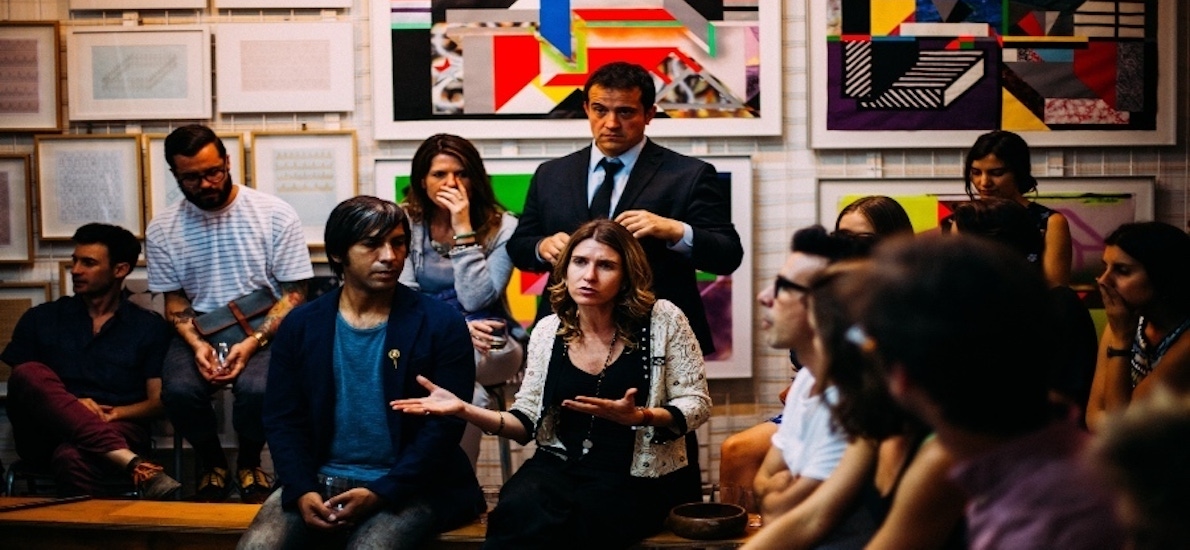
Creating equitable and valuable cities requires public engagement and collaborative development to ensure the longevity and success of urban projects.

Creating equitable and valuable cities requires public engagement and collaborative development to ensure the longevity and success of urban projects.
To discuss why community engagement is so important in urban projects, we should first define what community engagement is. It’s a broad term, but generally speaking means when either public or private parties, sometimes both, seek input and collaborate with a group of people bound together by geographic proximity, special interest, or some other factor.
Community engagement helps ensure that the community is part of the planning and decision making process of a project, and that their values, needs and wants are being reflected in what’s constructed and planned around them.
Traditional methods of community engagement have included posting fliers or hosting town hall meetings. While somewhat effective, these strategies don’t always reach everyone whose input matters.
According to Project for Public Spaces and Emily Manz of EMI Strategy, community engagement is a multi step process that includes both in-person and online communication.
The first step of the process they outlined is cultivating “cultural competency.” To ensure equitable participation, there needs to be an understanding of the demographics of the community, ranging from age to cultural groups nearby. The second part of their process is to facilitate more inclusive meetings. Going beyond just passing out flyers, this could mean providing childcare, gender-neutral restrooms, translation services, and wheelchair accessible entrances at these meetings.
PPS and Manz’s playbook says that professional facilitation and small meeting sizes can help ensure that not only that these inclusivities are met, but also that there is equal participation among community members who attend.
Thirdly, as said above, sometimes meetings are simply not enough. That’s where online outreach can come in. Or, it can can mean meeting community members where they are; at local events, flea markets, food truck festivals, and the like.
Perhaps what this playbook, and many other public space engagement success stories, says is one of the most important steps is truly most crucial; follow through. It’s easy for those in charge of placemaking to see community engagement as a small box to check once and not return to. But returning to community members with the solid vision of some of their suggestions, and continuing the feedback and engagement process is a way for all parties to arrive at the best possible outcome.

Ironically, it can be difficult to actually engage with the community.
A well-intentioned developer may team up with the city government to host a town hall about an upcoming project. In the town hall, the general plans for the project will be explained to the public, their concerns will be addressed, and they will be asked for their input. But, if only a small percentage of the community shows up, there’s a large portion whose voices are going unheard. Realistically, it’s difficult for many people to attend long meetings after work and school, without childcare or someone at home to cook dinner. And in the case of residents without those familial responsibilities, the idea of sitting through a town hall meeting just may not be their cup of tea.
Essentially, those who attend these town halls may not always be representative of the entire population. This means not all viewpoints, ideas, or concerns will be heard.
When the results of engagement sessions aren’t public, it makes the process fragmented. While some parts of the community may feel satisfied and heard, there’s a large portion that won’t know anything that was said or done. If the majority of the people at the meeting are young professionals and retired residents, there’s a large portion of families and those that work night shifts who aren’t heard, and don’t know what feedback was shared.
For those included, it can be tough to see how their feedback has been evaluated and included in the actual development process. Unless developers, both private and public, are incredibly transparent and explicit about how they’ve adjusted their plans to accommodate the community’s needs, they really won’t know until the project is complete.
Private projects that engage with their community and collect useful feedback move faster through the entitlement process. Because entitlements require the government to approve of a developer’s plans, that step is easier when the community has already participated.
Collaboration early on can also ensure a greater ROI for those involved in the private development. If the public response to a project is positive, due to early engagement, there’s likely to be greater use and enjoyment out of it once completed.
Rather than view community engagement as merely a hurdle in the journey of taking a project from conception to completion, private developers should embrace it for the duration of the planning and development.
For example, a six story apartment building in a dense, urban neighborhood is likely to be met with partial resistance from existing neighbors. But if developers make the community part of it in the early stages and get their feedback, that community is more likely to use that building. Maybe not the five stories above, but input on what should go in the ground floor retail spots or how much affordable housing to include can go a long way.
A high-end clothing store in a working class urban neighborhood won’t be met with much fanfare. But, a local restaurant, fitness studio or dog-friendly bar likely will be. Rather than play the guessing game, developers would be all the wiser to ask members themselves.
Public projects are funded by taxpayer money. Given this, they’re already far more likely to be under heavier scrutiny and disapproval.
Because these are going to be used by – you guessed it – the public, community engagement is absolutely imperative. Whether it’s a school, bridge, hospital, or other commodity, the community knows what they need best.
Let’s say the local government has proposed building a multi modal transportation bridge over a nearby river. Local bikers in the area will definitely want to see a large, safe bike lane put in. Runners, dog walkers, and parents who push strollers would benefit greatly from a well-sized pedestrian path.
Well, what about the river? Are there local kayakers, fishermen, or wildlife enthusiasts that want to ensure there’s proper spacing between the columns of the bridge?
Engagement on these public projects can ensure they strengthen the fabric of communities when residents are brought in early and kept on all the way through.
So, we’ve covered what community engagement is. But why exactly does it matter if a project leaders seek public input? The project is likely going to get built, with or without their feedback.
The community knows what their own needs are, better than placemakers. They know what would work, and what wouldn’t work. The process referenced above, Project for Public Spaces and Emily Manz of EMI Strategy, says that “an effective placemaking process engages these experts at the very beginning to set the priorities and vision for the project, and keeps them involved throughout implementation and beyond.”
Engagement and feedback keep these proposed projects relevant, because communities can’t fully benefit from urban projects unless they are truly part of the placemaking process. This process should be equitable and inclusive, as many members of the community that are generally left out of planning processes could be using the project in question.
Community engagement ensures that projects are meaningful, vibrant, and help strengthen the fabric of both the community and surrounding city.
The internet has made it easier for residents to connect with both the planning and development of these urban projects. By using technology, both public and private developers can generate much more thoughtful, authentic comments and suggestions from the general community.
There is a variety of technology that developers can leverage. Setting up a number for residents to text their input is a productive way to gather their feedback. Well-placed, multilingual signs throughout the community and on the proposed site can share that number and prompt people to share their thoughts and concerns.
Another key facet of this person-to-project connection is a well-designed, public facing website. This allows easier access from visitors. Visible comment boxes and submission forms are key, as well as easy-to-digest information laying out the planning phases and city contacts.
The target audience for these projects are more likely to be reached online, and this written form of communication tends to be more positive and constructive in an online forum.
Going beyond just the feedback, technology can also help community members better visualize and understand just what public or private groups are proposing. At Authentic, we're actively working on solutions to merge a project's website with a portal for online engagement. Our hypothesis is that digital community engagement can create a more constructive and collaborative development project, for both public and private stakeholders.
We see tools like virtual and augmented reality being able to showcase a project to the community, before ground is even broken; and moving public private communication loops off pens, papers, and clipboards, and into a digital format, where people can provide feedback via their phones, tablets, and other devices 24/7.
Our goal isn't to replace traditional boots-on-the-ground community engagement, but to supplement it, with contemporary tools and technology.
Subscribe here to get our short and sweet monthly newsletter!